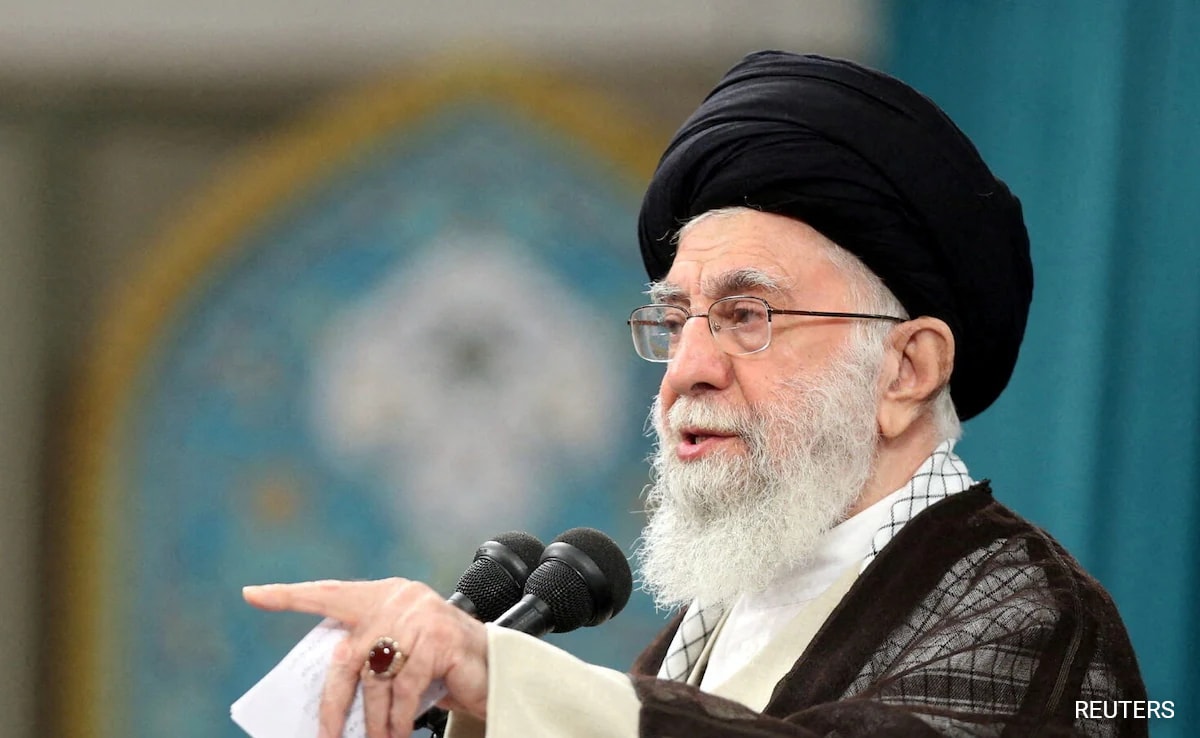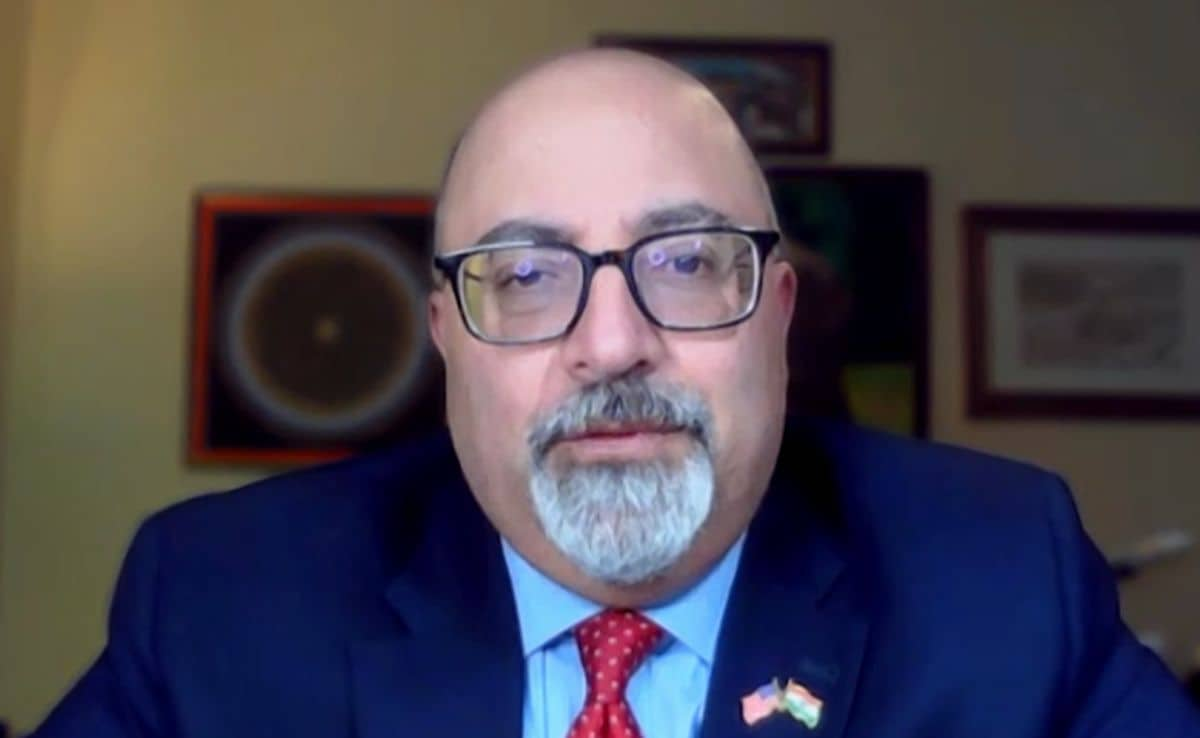Ayatollah Ali Khamenei has served as the second supreme leader of Iran since 1989. He is a powerful figure in the Middle East now and had issued a ‘fatwa’ or religious decree against US President Donald Trump and Israeli Prime Minister Benjamin Netanyahu, calling them “enemies of God”. The religious decree followed a 12-day war that erupted on June 13, when Israel launched a bombing campaign in Iran that killed top military commanders and scientists linked to its nuclear programme.
However, rising to power did not come easy to Khamenei. His life was filled with hardships and he was imprisoned for eight months – a period he described as the most difficult time of his life. The prison where he was held before the 1979 Islamic Revolution, under Shah Reza Pahlavi’s regime, is now known as the Ebrat Museum.
The Ebrat Museum, once a notorious prison in Tehran, is known not only for its brutal history but also because many prominent political and religious figures were incarcerated there.

The Ebrat Museum, once a notorious prison in Tehran, is known not only for its brutal history
Ayatollah Khamenei’s Time In Prison
Ayatollah Ali Khamenei was arrested multiple times in the 1960s and 1970s due to his active participation in Islamic revolutionary movements against the Pahlavi regime. During this time, he was tortured by SAVAK, the Shah’s secret police. The Ebrat Museum, then known as the “Joint Committee Against Sabotage” prison, held Khamenei six times.
In a narrow corridor of the museum, photographs of former prisoners are displayed, including one of Ayatollah Khamenei in a brown frame. Below his name, written in Persian, is: Ayatollah Seyyed Ali Khamenei. The museum also preserves a small, dimly lit cell with bars on its only window, where Khamenei was held. A wax statue of him, wearing a black turban, round glasses, and a brown robe, stands in this cell, symbolising his suffering and resolve during that period.

A wax statue of Khamenei, wearing a black turban, round glasses, and a brown robe, stands in this cell
Khamenei’s Arrests And Tortures
In 1962, Khamenei joined the revolutionary movement under Imam Khomeini’s leadership in Qom against the Shah’s pro-American and anti-Islamic policies. He played a crucial role in delivering Imam Khomeini’s messages to Ayatollah Milani and other clerics in Mashhad. In 1963, he was arrested for the first time in Birjand and detained for one night.

This museum, once a terrifying prison, brings to life some of the most tragic and horrifying stories of Iran’s history
Between 1972 and 1975, Khamenei conducted classes on the Quran and Islamic ideology in three different mosques in Mashhad. His lectures, particularly on Imam Ali’s Nahj al-Balagha, attracted thousands of youths and students. These activities alarmed SAVAK, and in the winter of 1975, his home in Mashhad was raided. He was arrested for the sixth time, and his books and notes were confiscated. This time, he was held for several months in Tehran’s infamous “Police-SAVAK Joint Prison” (now the Ebrat Museum). Khamenei described this imprisonment as his most difficult, marked by inhumane treatment of prisoners.

Khamenei described this imprisonment as his most difficult, marked by inhumane treatment of prisoners
Khamenei’s Revolutionary Contributions
Khamenei’s revolutionary activities began in the 1960s when he became a disciple of Imam Khomeini. He played an active role in protests against the Shah’s regime. After the 1979 Islamic Revolution, when the Shah’s regime collapsed and Khomeini returned to Tehran from Paris, Khamenei rose quickly through religious and political ranks. He was appointed Deputy Defence Minister and became the Imam of Friday prayers in Tehran, a position he still holds. In 1989, he was chosen as the Supreme Leader of the Islamic Republic.
Khamenei’s Memory In The Museum
The Ebrat Museum displays Khamenei’s photograph and wax statue, reflecting his revolutionary struggle and suffering under the Shah’s regime. According to a museum official, “God destined Khamenei to be the leader of the nation.” This exhibit serves as a reminder of the brutality of the Shah’s secret police, SAVAK, and portrays Khamenei’s leadership as a symbol of revolutionary sacrifice.
Hijab Was A Crime At That Time, Women Were Imprisoned
It wasn’t just Ayatollah Khamenei; thousands of scholars, leaders, and followers of Islam were imprisoned in this jail. Women who wanted to cover their heads were also incarcerated. While today many women in Iran wish to go without headscarves, at that time, covering one’s head was a crime. For this reason, Shah Reza Pahlavi imprisoned these women as well. Their photographs are still displayed in the museum today.

Women who wanted to cover their heads were also incarcerated
Iran’s Ebrat Museum: A Painful Memory Of History
Located in Tehran, the capital of Iran, the Ebrat Museum (Muze-ye Ebrat) is a place that not only reflects a dark chapter of history but also offers a profound lesson for humanity. This museum, once a terrifying prison during the Pahlavi regime, brings to life some of the most tragic and horrifying stories of Iran’s contemporary history.
History Of The Ebrat Museum
The Ebrat Museum building was constructed in 1932 under Reza Shah Pahlavi’s orders by German engineers. It was designed as Iran’s first modern prison, initially part of the Nazimiyeh complex. Later, in 1947, it became the country’s first women’s prison. However, its most notorious use was during Mohammad Reza Pahlavi’s (Pahlavi II) reign in the 1960s and 1970s, when it was used to detain and torture opponents of the Islamic revolutionary movements. During this period, the prison was under the control of SAVAK, known as the “Joint Committee Against Sabotage.”
After the 1979 Islamic Revolution, the prison was renamed Tohid Prison and operated until 2000, when it was closed following human rights investigations. In 2002, Iran’s Cultural Heritage Organisation transformed it into a museum, which now tells visitors the story of that era’s brutality and oppression.

The Ebrat Museum building was constructed in 1932 and was designed as Iran’s first modern prison
Architecture Of The Museum
The Ebrat Museum is known for its unique and terrifying architecture. This four-story building is earthquake-resistant, designed to make escape impossible for prisoners. Its central feature is a circular courtyard covered by a latticed roof. All corridors lead to this central space, making the prison’s structure even more intimidating. The walls were built to prevent echoes of screams, increasing the psychological pressure on prisoners.
The museum includes several sections, such as solitary and communal cells, torture rooms, meeting areas for prisoners, and clothing storage rooms. These sections vividly depict the cruelty of that time.
Exhibits In The Museum
The Ebrat Museum aims to remind visitors of the atrocities committed against political prisoners during the Pahlavi regime. The museum features several exhibits that bring that era’s cruelty to life:
Mannequins and Scenes: The museum uses mannequins to depict torture scenes, complete with bloodstains. These displays are suitable for adults but may be disturbing for emotionally sensitive visitors.
Documentaries and Interviews: A short film is shown in the museum’s amphitheater, featuring interviews with former prisoners. Available with English subtitles, it introduces visitors to the truth of that era.
Guided Tours by Former Prisoners: One unique feature is that some guides are former prisoners of the jail. Their personal stories and experiences give visitors a deep sense of the horrors of that time.
Documents and Photographs: The museum displays numerous photographs and documents showcasing the brutality of the Pahlavi regime and SAVAK. These include images of the royal family, reminding visitors of the era’s ruling power.
Significance Of The Museum
The Ebrat Museum is a prime example of dark tourism, representing historical sites associated with death and tragedy. It not only preserves a painful part of Iran’s history but also demonstrates how a place of oppression can become a center of memory and learning. It inspires visitors to value human rights and unite against oppression.
How To Visit The Ebrat Museum
The Ebrat Museum is located at Imam Khomeini Square, Yarjani Street, in Tehran. It is open daily, offering guided tours in English. The tours include a short film and stories from former prisoners, providing an immersive experience. Tickets are required for entry, and sensitive visitors are advised to prepare mentally, as the exhibits can be emotionally impactful.
The Ebrat Museum is more than just a museum; it is a place that exposes the dark pages of history. It reminds us that stories of oppression and tyranny must not be forgotten to prevent such events from recurring. If you are in Tehran and want to understand Iran’s contemporary history, a visit to the Ebrat Museum is a must. It is not only an educational experience but also awakens a deep sense of empathy for humanity.




